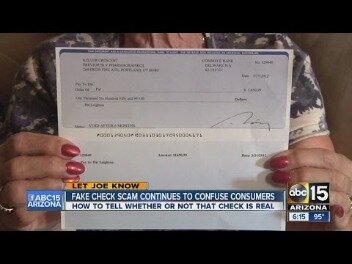To help tax professionals and others, the IRS continues to provide additional legal clarity around ERC rules. On July 20, the IRS issued a legal advice memorandum applying the statutory requirements to five different scenarios. Contrary to advice given by unscrupulous preparers, this guidance makes clear that supply chain disruptions do not qualify an employer for the credit unless they are due to a government order. While smaller regional banks may still serve marijuana companies, major institutions and credit-card networks like Visa and Mastercard avoid facilitating marijuana transactions on their networks due to federal illegality.
Credit memorandum and debit memos can be used to change a customer’s account balance. A customer’s debt increases with a debit memo, while a credit memo reduces credit balance. This can be an alternative version of an invoice to a customer, and is used when the amount billed on the original invoice was too low. Thus, the debit memo is essentially an incremental billing for the amount that should have been included in the original invoice. This usage is not common, since many companies simply re-issue the original invoice with an adjustment, or issue an invoice for the incremental amount, rather than use a debit memo.

In either of these cases, the buyer has the right to return the damaged or incorrect inventory for a full refund. Both notes notify customers about a change in their account balance either by increase or decrease. A debit note is a commercial seller’s, buyer’s, or financial institution’s notification of a debit placed on a recipient’s account in the sender’s books. At first glance, a credit memo and refund might seem like the same thing, but there’s a difference. Technically, a refund involves a reversal of the original purchase transaction.
Receivables : Debit and Credit Memo
Unscrupulous promoters may lie about eligibility requirements, including refusing to provide detailed documents supporting their computations of the ERC. In addition, those using these companies could be at risk of someone using the credit as a ploy to steal the taxpayer’s identity or take a cut of the taxpayer’s improperly claimed credit. The IRS has trained auditors examining ERC claims posing the greatest risk, and the IRS Criminal Investigation division is working to identify fraud and promoters of fraudulent claims.
- It gets created and then sent off to a supplier that also includes a note that explains what it’s for.
- One example of a debit memo is when a seller issues a credit memo to decrease the invoice total payment.
- Rather than issuing a full refund, the business owner will issue a credit memorandum to compensate the buyer.
- The purpose of debit memos for business to business transactions is to rectify a billing error issued by one party to the other.
- In order for the client to correct the situation, the notice gets delivered.
When a customer pays too much, the extra can be offset with a debit memo. This allows the accounting department to clear it out by sending the memo back to the customer. If the extra amount in a customer’s account is the result of an accounting error that results in a residual balance, it can also be rectified with a debit memo. In business-to-business transactions, a debit memo is an adjustment procedure following an inadvertent under-billing of goods or services purchased a customer. Debit memos can arise as a result of bank service charges, bounced check fees, or charges for printing checks.
The notice gets sent out so the client can then rectify the situation. Debit memorandums are also commonly referred to as a debit memo or a debit note. A debit memorandum is a notification that a deduction has been made by a bank or business for (e.g., a fee it charged you). Your account balance has been reduced so no payment is required from you.
Information Found on a Credit or Debit Memo
Although a debit note adds an extra payable amount to the original invoice. The credit memo cuts off the total amount of the original invoice to a certain extent. For example, if you have $10.000 in your bank account while the bank needs to charge you $100. The bank issues a bank debit note charging you with the fee for a specific service and your balance now has become $9.900.
The good news is we put together this guide to cover the most important pieces of information. Debit memos have specific purposes and are used only for adjustments beyond normal debits. Werfel told Tax Forum participants the IRS remains deeply concerned about the impact of the ERC on tax professionals who are doing the right thing while their clients are being lured by aggressive marketing claims. The IRS continues to urge businesses, tax-exempt organizations and others considering applying for this credit to carefully review the official requirements for this limited program before applying. In the meantime, the IRS continues to intensify compliance activities involving ERC claims.
Incremental Billing
If you pay close attention to your bank statements, you may notice an item labelled, “credit memo”, from time to time. But without more information, it’s hard to know what the credit memo is for; why you received extra money in your account. The same goes for “debit memos.” Businesses also issue credit and debit memos for various reasons, which we’ll cover in this article. Transactions that give rise to debit memos when it comes to retail banking are bank service fee, checkbook printing, charges due to insufficient funds of a check or checks issued. It is issued in many commercial transactions to inform the buyer, the seller, or bank customer of an adjustment in his bank account balance.
CaixaBank lets customers split the cost of direct debit bills through … – WebWire
CaixaBank lets customers split the cost of direct debit bills through ….
Posted: Mon, 10 Jul 2023 08:12:17 GMT [source]
The debit memo is usually issued in the same format used for an invoice. When issued, debit memos typically appear on the monthly statements of outstanding accounts receivable that are sent to customers. A particular kind of notice that a customer would get if their account balance dropped gets called a debit memorandum. In order for the client to correct the situation, the notice gets delivered. Also known as a debit memo or a debit note, debit memorandums are commonly used in financial transactions. For example, let’s say that your bank account currently has $5,000 in it.
Internal offsets using debit memos
Debit memorandums are also used in double-entry accounting to indicate an adjustment that increases a customer’s amount due. With more than 2.5 million claims coming in since the program was enacted IRS claims processing slowed due to the complexity of the amended returns. The IRS has made substantial progress on these claims this year, with 99 percent of claims approximately three months old as of mid-July.

A debit memorandum is an accounting term referring to an entry that serves as a notice to customers about a change or adjustment to their account that decreases the balance. The memos typically are shown on bank customers’ monthly bank statements; the debit memorandum is noted by a negative sign next to the charge. The purpose of debit memos for business to business transactions is to rectify a billing error issued by one party to the other. Keep in mind, a debit memorandum is a debit to the sender’s accounts payable and a credit to the receiver’s accounts receivable. Both a debit memo and a credit memo inform clients of a change in their account status. Customers (or buyers) are informed by a debit memo as to why their account balance has decreased or why they now owe more.
A credit memo appears as a separate transaction from the original purchase. If there is a small credit balance remaining in a customer account, a debit memo can be generated to offset it, which allows the accounting staff to clear out the balance in the account. A debit memo on a company’s bank statement refers to a deduction by the bank from the company’s bank account. In other words, a bank debit memo reduces the bank account balance similar to a check drawn on the bank account. There can be a few different types of debit memos depending on the situation and the industry.

A debit memo is common in the banking industry in several situations. For example, a bank may issue a debit memo when it assesses fees. The fee will be debited (or deducted) from the customer’s account and recorded as a debit memorandum to indicate that it is an adjustment rather than a transaction. A debit memo may also be used when adjusting an incorrect account balance.
What does debit memo mean on a bank statement?
In order to get access to credit card payments, marijuana should become legal at the federal level, but the current situation suggests this is not going to happen anytime soon. But what both consumers and businesses in the marijuana space are asking for are credit card payments. However, dispensaries can’t accept credit card payments due to federal-level marijuana illegality. Mastercard has instructed payment processors and banks not to accept marijuana transactions on its debit cards.
For example, they can be common in retail banking, to fix a billing error, or to offset credit. Keep reading for a further breakdown of some of the most common types of debit memos. Common debit memos include returned check fees, insufficient funds fees, interest fees, fees for printing checks, bank equipment rental fees, and adjustments to incorrect deposits. In retail banking, a debit memorandum is provided to an account holder to indicate that an account balance has been decreased adp clients face potential tax fraud after recent breach due to a reason other than a cash withdrawal, a cashed check, or use of a debit card. The reasons a debit memorandum may be issued relate to bank fees, incorrectly prepared invoices where the amount owed should be greater, and rectifying accidental positive balances in an account. Transactions such as bank fees, correction of invoices underbilled by sellers, or a correction of the balance in the person’s bank account are just some of the examples of why a debit memo is done.
Suncor swaps out laptops after cybersecurity incident as energy sector takes stock of risks – CBC.ca
Suncor swaps out laptops after cybersecurity incident as energy sector takes stock of risks.
Posted: Thu, 06 Jul 2023 07:00:00 GMT [source]
Mastercard’s move comes after Visa
V
sent a memo to banks in 2021, clarifying its stance on cashless ATMs used by marijuana businesses and stating that they violate the company’s rules. Due to Visa’s policy against marijuana, the cashless ATM method is prohibited. Debit memos are necessary for a transparent banking system and help you know what you are charged for. So, from now on, the next time a debit memo comes your way, you will find it familiar. It represents an adjustment to an account that reduces a customer’s balance.



